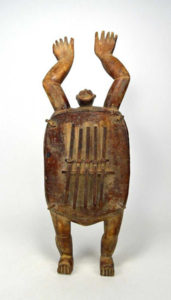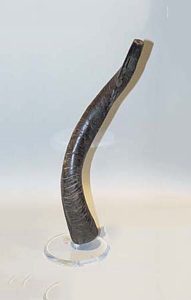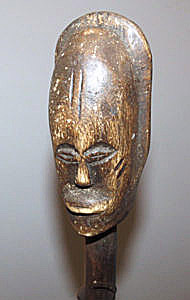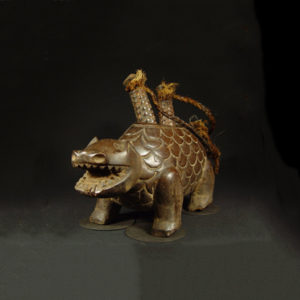Zande
The word azande means “the people who possess much land.” This relates to their history as conquering warriors. The Zande migrated during the 18th century from Sudan to the northern part of the Democratic Republic of the Congo, settling on the banks of the Uele River. They live also in the Central African Republic and the Sudan. They occupy a region of savanna and forest and in common with the Mangbetu, Zande men hunt and fish while the women tend the fields.
In political terms, this ethnic group is ruled by a king with succession to the throne passing to his eldest son, while the younger ones govern the kingdom’s provinces. Royal patronage was significant in the development and movement of art throughout this area. The political structure is counterbalanced by the mani secret association, created at the end of the 19th century.
Zande sculptures represent ancestors or animal figures with simplified features and enlarged heads. The mani association celebrates the importance of woman and uses statuettes called yanda. These statues are associated with the highest rank of the secret mani society. The figures protect society members from the dangers of illness, hunting, evil spirits, etc. Usually, female figures are made from wood or fired clay; female yanda figures often wear accessories, such as bead collars, pendants, and coins.
Source: index.html (zyama.com)




